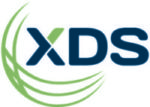
Welcome to part 3 of our series on combating sales suppression.
In our prior posts, we discussed the magnitude and simplicity of perpetrating fraudulent sales suppression. Unfortunately, many revenue agencies have accepted sales suppression as unidentifiable and untraceable without extraordinary manual efforts. Is that assumption accurate? Let’s challenge that belief by examining the current audit methods.
For most revenue agencies, an audit is initiated based on a tip or suspicion that a retail business is maintaining a second set of falsified sales records. Some revenue agencies are using trend analysis to detect reported cash sale anomalies. The standard practice for tracing sale suppression includes the following steps:
- Have auditors complete multiple incognito visits to the establishment and purchase items with cash.
- Have the auditors formally initiate the audit 1-4 weeks later and request the sales journals.
- Examine the sales journal and compare it to the receipts from the auditor’s controlled cash purchases.
- Manually identify receipts or line items that are missing or have been modified.
- Manually identify any missing receipts beyond the auditor’s controlled cash transactions.
- Estimate the tax liability based on a projection.
While this represents most jurisdictions’ current practice, it is not very thorough. It can be thwarted if the business correctly guesses the presence of auditors or receives a tip about the pending audit. The audit results may also be inaccurate if the transaction samples are not representative of the standard business volume or processes.
In a nutshell, the techniques from past decades are not keeping pace as technology advances. The fraudsters have advanced their use of POS systems and general technology while auditors continue to rely on outdated methods.
The reality is that the technologies that support business productivity and fraudulent practices can actually be used to end those fraudulent practices. While that may sound grand, ambitious, and bold, it is absolutely true! Do not confuse this with easy-to-do or simple. These tools and techniques are highly advanced, situationally and environmentally dependent, and require substantial time and effort to master. If you want to take advantage of those techniques, reduce fraud, and collect extremely past due revenue, you need to change some practices and approaches to identify and resolve the problem.
The first practice to change is how fraudulent businesses are identified. Many jurisdictions are hesitant to initiate a program based on the fear that it may be challenged as biased. Rather than be paralyzed by concern, XDS offers information-based solutions that immediately identify businesses that are most likely committing fraud. The same advanced analytics that help businesses optimize their sales and segment their customers can be used to optimize audit selection and segment the least compliant population. Our data-driven approach, supported by scientific method and statistics, makes it possible to be fair and equitable. With our analytic models, you will be applying scientific method to pursue the least compliant businesses and targeting those is easily defensible. Keep in mind that fairness applies to taxpayers who abide by the laws and rules, especially those who are in compliance and follow those rules.
 XDS’ solution goes beyond accurate identification of businesses that are suppressing sales. We offer tools and services to help you collect sales transaction data. The biggest challenge your peers face is the analysis of that data. XDS will remove that burden from your staff. Our service goes far beyond trend and anomaly detection. We will apply advanced analytics, machine learning, and deep data mining to identify specific details on fraudulent transactions. With our solutions, your department will be able to move quickly from data collection to closing an audit with strong evidence and confidence. This will allow you to collect overdue revenue and increase future compliance. Your department can benefit from the latest techniques and technologies with minimal training. XDS is your partner to close the gap between your department and the constant evolution of fraud practices.
XDS’ solution goes beyond accurate identification of businesses that are suppressing sales. We offer tools and services to help you collect sales transaction data. The biggest challenge your peers face is the analysis of that data. XDS will remove that burden from your staff. Our service goes far beyond trend and anomaly detection. We will apply advanced analytics, machine learning, and deep data mining to identify specific details on fraudulent transactions. With our solutions, your department will be able to move quickly from data collection to closing an audit with strong evidence and confidence. This will allow you to collect overdue revenue and increase future compliance. Your department can benefit from the latest techniques and technologies with minimal training. XDS is your partner to close the gap between your department and the constant evolution of fraud practices.
 XDS isn’t here simply to preach about technology advances. We are here to help you review your processes and legal approach. We want to be your partner to have an all-inclusive solution. To understand some key constraints associated with the standard process, return for our next post in the series: Why you may want to avoid treating the audit results as criminal activity.
XDS isn’t here simply to preach about technology advances. We are here to help you review your processes and legal approach. We want to be your partner to have an all-inclusive solution. To understand some key constraints associated with the standard process, return for our next post in the series: Why you may want to avoid treating the audit results as criminal activity.
